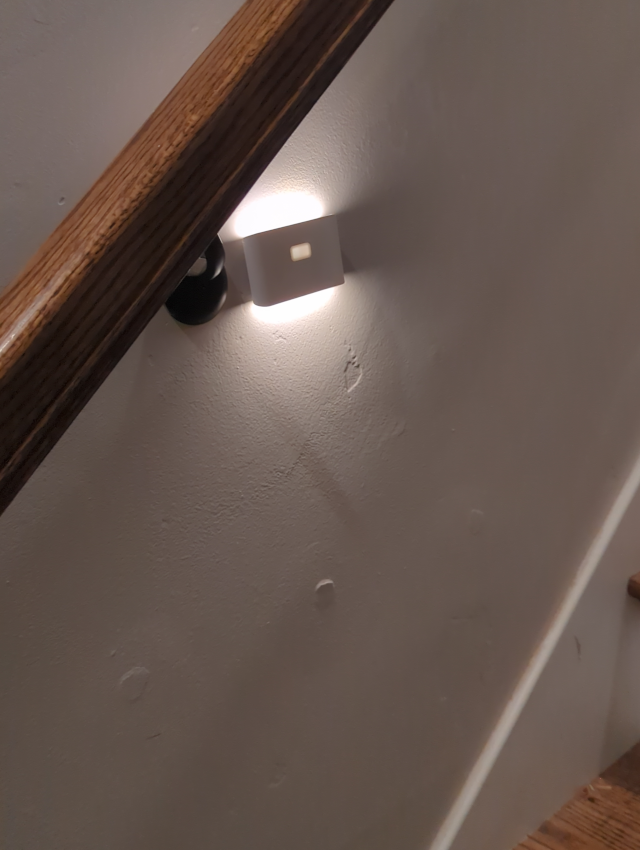When I moved into my current house on the mainland, there was a problem. The house is mostly on one level, but there is a garage that’s down a flight of stairs and a loft that’s up a flight. I was still (and perhaps always will be) paranoid about my children’s safety, and these dark stairwells worried me. I wanted lights that would automatically illuminate the hidden stairs. Then Wyze (largely a purveyor of internet-of-things devices) announced the Wyze night light, a rechargeable, battery-powered, motion-activated light that came in a pack of three, so that motion that triggered one would turn all three on. It seemed like the perfect solution and was quite inexpensive, so I bought a three-pack.

I installed them (simple: they come with removable-adhesive mounting plates, and the lights stick magnetically to the plates) and they did exactly what I wanted.
I wish the story ended there, but it didn’t. The claimed battery capacity was that, used in motion-sensing mode and paired with others, a charge should last about 84 days in a low traffic area. I fully charged them before installation, and they worked fine for about two weeks. I’d say we were in a low-to-moderate traffic situation, so I was disappointed when, after the first month, I realized that I could not reliably count on them working for two weeks without recharging. They have a tiny red light that’s supposed to flash when the charge was low, but it did not work. Perhaps three times in three years I’ve seen the flashing light; all the other times my first indication that they were low on charge is that they simply would not turn on. That’s not a reasonable scenario for safety devices. As winter came on and the number of daylight hours dropped, it became clear that they wouldn’t get anywhere near two weeks’ use on a charge.
I solved the charge problem by simply recharging all three lights every Monday. It was all very good, but an observer would think I was crazy to put so much time and effort into maintaining night lights for goodness’ sake. But I’m a person of structure and organization, and I retired about a year after I got the lights, so keeping up a schedule wasn’t that hard.
Now, though, after three years of use, the charge is no longer lasting a full week. Four days is pushing it, so even though my schedule is to now charge on Mondays and Thursdays, there is still the occasional day (and more if I’m traveling) when the lights won’t work. Fortunately, my “children” are now much older and responsible adults who aren’t likely to fall down stairs for want of turning on a light. Still, it saddens me that these clever and convenient little lights have reached end of life. The batteries, apparently, are not replaceable.
Or so they say. I’m now armed with a spudger and a soldering iron. I’m going to dissect one of the little lights and see if I can figure out how to put in a new battery. I’ll report back if I succeed.
—2p
Addendum 2024-06-24
The battery replacement wouldn’t have been difficult, but would have cost more than simply replacing all of the lights. Not practical. On the other hand, the Wyze forums suggested operating the lights without using their synchronization feature. I thought I’d give it a try. It’s certainly not as cool or even as safe as having all the lights go on when one is triggered, but it hugely increased the battery life. Because of how I have them placed, I think they still spend nearly as much time activated, so I’m guessing the power saving is purely from not having to do as much radio communication. In any case, though, they went from failing after three days to running longer than a week. I can get by with that until we move.